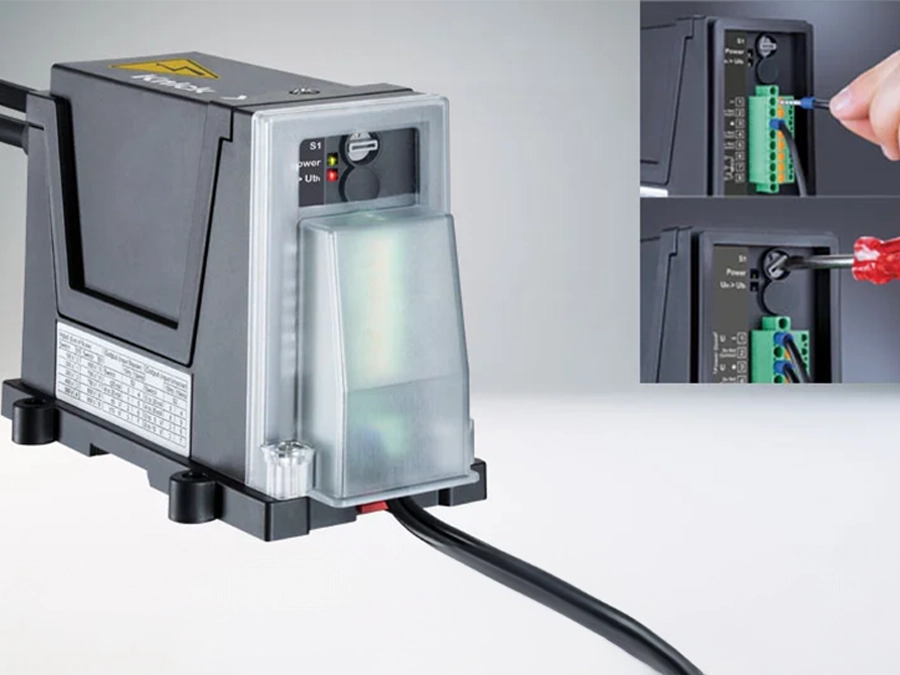P32200 Sensor Transmitter | Input strain gauges and load cells | For safety circuits up to SIL3 | Configuration interface for PC
Description
The universal P32200 strain gauge transmitters provide connection possibilities for all standard strain gauge force transducers and strain gauge load cells in full bridge configuration. They can be flexibly adapted to the respective measuring task using DIP and rotary encoder switches or via an IrDA port.
- Universal usability
for strain gauges, pressure and load cells, and other resistive measuring bridges - Convenient setting of all parameters
via IrDA interface. Uncomplicated, menu-guided adjustment also “on site“ including archiving of the configuration data. - Intuitive configuration
of the basic parameters. Easy, without tools, using 4 rotary and 8 DIP switches - Calibrated range selection
No complicated trimming - Convenient adjustment
Zero point and sensitivity adjustable via IrDA port - Simulation
of any desired output values for correct installation/commissioning - Protective separation
according to EN 61140 - protection of the maintenance staff and subsequent devices against excessively high voltages up to 300 V AC/DC - Functional safety
up to SIL 2 (up to SIL 3 in case of redundant configuration) with TÜV certificate Systematically developed according to EN 61508 - High accuracy
due to innovative circuit design - Minimum space consumption
in the enclosure. Modular housing: just 6 mm wide. More transmitters per meter of DIN rail - Low-cost assembly
Quick mounting, convenient connection of power supply through DIN rail bus connectors (in case of 24 V DC power supply) - 5-year warranty
3-port isolation with protective separation up to 300 V AC/DC according to EN 61140 ensures optimal protection of personnel and equipment as well as unaltered transmission of the measurement signals. The P32200 offer maximum performance in the smallest of spaces.
Adjusting the zero point and sensitivity to the individual strain gauge sensor is particularly convenient via the infrared port, for example using a PDA. Sensors with known characteristics can be very easily calibrated using 4 rotary encoder switches and 8 DIP switches. Special measuring tasks can be solved with SensoTrans devices that Knick configures according to individual specifications. Fixed-range devices without switches are used, for example, when manipulations or mix-ups must be precluded.
Knick offers the P32200 transmitter with SIL approval for applications with high demands on functional safety. The requirements of EN 61508 were implemented through specially developed hardware and software. The implemented fail-safe concept makes use of structural measures at the device level (redundancy of system components) and diagnostic methods for selective fault detection. The product is SIL 2 approved (EN 61508) by an authorized body (TÜV Rheinland). SIL 3 in redundant implementations
Knick Products Comply With UL - What Does That Mean?
Jan 2018
Interface Technology
We look forward to hearing from you!
Contact Us
| Product Category: | Sensor Transmitter |
|---|---|
| Device Type: | Strain Gauge Transmitters |
| Input: | Strain Gauges / Load Cells |
| Output: | 0 … 10 V, 0 … 20 mA, 4 … 20 mA, ±10 V, ±20 mA |
| Working Voltage, Min.: | 50 V, 300 V |
| Test Voltage: | 2.5 kV, 510 V |
| Fault Class: | 0.1 %, < 0.5 % |
| Housing: | 6 mm Modular housing |
| Cutoff Frequency: | < 1 kHz |
| Power Supply: | 24 V DC |
| Approvals: | CSA, SIL, UL |
| Product Line: | ProLine |







